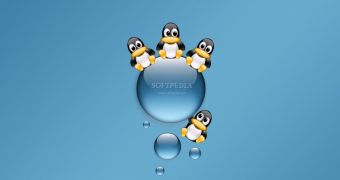Slackware is one of the earliest Linux distributions created by Patrick Volkerding of Slackware Linux, Inc. One of the things Slackware is best known for among the open source community is the fact that it takes in only the stable releases of applications; stability and simplicity being the two fundamental concepts Slackware is based on.
Recently, Patrick Volkerding has revealed the change log for the so-called RC2 version of Slackware 12.0. This second release client is said to come along with some more bug-fixes and upgrades, rather than with new features or other additions.
Highlights:
- upgraded Linux 2.6.21.5 SMP kernel source - kde/amarok-1.4.5-i486-5.tgz: Recompiled against new libraries - a/util-linux-2.12r-i486-6.tgz: Patched a problem where umounting by UUID would cause umount to segfault for non-root users. - kde/k3b-1.0.2-i486-1.tgz: Upgraded to k3b-1.0.2. - usb-and-pxe-installers/: Updated with fixed umount - recompiled Linux 2.6.21.5 SMP kernel modules - recompiled Linux 2.6.21.5 SMP hugesmp.s (full-featured) kernel.
There has also been added an installer script to create the "/usr/bin/htmlview symlink" if one does not already exist (programs in Slackware are starting to expect htmlview, which is not yet a standard but which seems to become an ad-hoc one).
The KISS ("Keep it Simple, Stupid") concept that stands at the grounds of Slackware points mainly to the viewpoint of system design. The distribution cannot actually be called "simple" in what concerns the ease-of-use and there are few GUI tools to configure the system. But this makes Slackware a fast and stable distribution which compensates the lack of user-friendliness.
A thing that would definitely need improvements would be its package management system which installs, upgrades, and removes packages but does not have the ability to track or manage dependencies. If any of these are missing, there may be no indication until one attempts to use the newly installed software.

 14 DAY TRIAL //
14 DAY TRIAL //